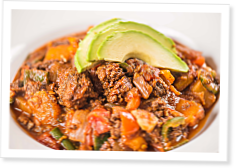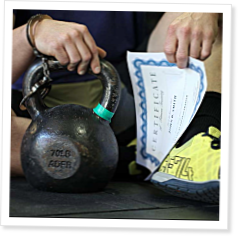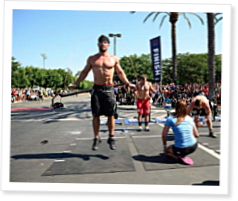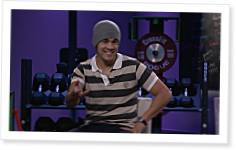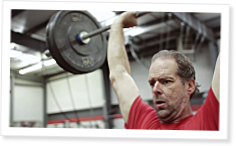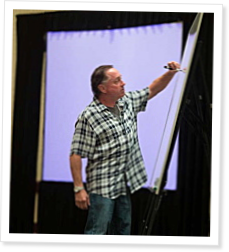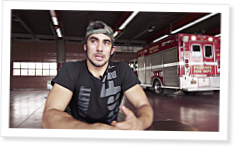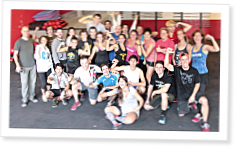First, the Nutrition of the Sixties
by Dr Ken Leistner
“...wheat germ, yogurt, freshly made juices, raw milk, and blackstrap molasses were food products that seemed to come from a foreign planet in the estimation of most. If one throws in the mineral baths, introduction of yoga, and any type of meditation, it was rather easy to lump lifting weights into the “these people are all nut-jobs” category. This was the reality of the physical culture lifestyle, but for many, lifting weights was a part of it and just as often left onlookers scratching their heads and wondering “why do they do it?””
Read More
var addthis_config = {"data_track_addressbar":true};
”...it was rather easy to lump lifting weights into the “these people are all nut-jobs” category. This was the reality of the physical culture lifestyle, but for many, lifting weights was a part of it and just as often left onlookers scratching their heads and wondering “why do they do it?””
It is only in retrospect that I realize how fortunate I was when I first began to train with weights. A point I have made strongly and repeatedly is the absolute fact that weight training in any form was so limited in its exposure and acceptance to the general public and athletic community, that it was seen as a cult activity. That most of us who engaged regularly in any type of weight training, even in a far-flung and exceptionally populated area like the New York City Metropolis knew of, knew about, or personally knew each other, is indicative of the closed-community status the activity held. An “obvious lifter” was not necessarily respected, revered, looked up to, or appreciated. The connotation of “lower class,” “working class,” or “roughneck” was always present, and most trainees did not go out of their way to impress others with public displays of muscular development. Strength was respected, but lifting weights to attain strength was not appreciated. If one augmented the physical development that came through manual labor by use of consistent weight training, it certainly made work easier but the general public would sooner attribute any muscular development to the labor.
From the age of 12 through his mid-20s, the author held a variety of jobs that required a great deal of physical effort, including iron worker, line cook, oil rig roustabout, factory work, long haul tractor-trailer driver, and lumberjack (shown above in East Solon, Maine), all of which augmented the physical development that came from consistent weight training.
The nutritional habits of dedicated trainees, lifters and bodybuilders – the bodybuilders certainly were more extreme – presented one more hurdle to public acceptance. Seeking out massive quantities of protein based foods, drinking gallons of milk, and avoiding sugar-laden and white flour food products made for a definite demarcation from the general public. Even into the mid-1960s, there was a close association between “lifting weights” and “The Physical Culture Lifestyle.” The latter embodied all that was related to “healthy living,” and to those immersed in its beliefs, weight training was an integral part. In an era when anyone running slowly down any street in America was considered to be a prime suspect in criminal activity rather than “a jogger,” physical culture was a very strange concept. As a nation, we had survived World War II, we had survived The Korean War, we had survived the threat of annihilation by the Russians, and we deserved to move to the suburbs where life was a lot better than it had been. “Better” translated to a lot of good tasting food with minimal thought given to the health related effects of what was eaten. Thus wheat germ, yogurt, freshly made juices, raw milk, and blackstrap molasses were food products that seemed to come from a foreign planet in the estimation of most. If one throws in the mineral baths, introduction of yoga, and any type of meditation, it was rather easy to lump lifting weights into the “these people are all nut-jobs” category. This was the reality of the physical culture lifestyle, but for many, lifting weights was a part of it and just as often left onlookers scratching their heads and wondering “why do they do it?” In my case, drinking up to eight quarts of milk each day and pushing down six or eight sandwiches in addition to a dozen eggs, a pound of bacon, one to three pounds of hamburger, and an occasional carton of yogurt or cottage cheese became the equivalent of a second, full time job. My “schmoozing” for food during school lunch period was for most of the other students, one more sign of the odd behavior that “a lifter” presented to the public. I was often stuffed, although the progressive gains in size and strength positively reinforced what my family viewed as a bizarre existence. Unfortunately the need for nutrition was becoming an expensive burden and I began to seek alternatives.I made note in Part 2 of this series of articles that drinking protein shakes allowed me to consume the same amount of protein as my many quarts of milk, without the same overwhelming volume. That I shared the same problem as the great bodybuilder Larry Scott was almost exciting, for it validated the fact that my thought process had to be at least partially correct. Scott, in more of Rheo’s Iron Man ad copy, had addressed bodybuilders everywhere, in spite of continuing to be one of Weider’s primary point men for the sale of Weider products, and said, “…I am thankful that I met Rheo Blair, and followed his advice about small meals and frequent feedings. I began using liberal quantities of his protein supplement, and found that by consuming 1/3 cup of protein in a glass of half and half, I got the protein and mineral value of one quart of milk…without the bloat and discomfort.” Yeah man, I may not have been a genius, but I was definitely on to something ground-breaking that was going to change my strength and physique levels for the better. What a unique idea, smaller feedings and protein shakes that would replace the many quarts of milk I had been guzzling daily. Having exhausted the litany of Weider and Hoffman protein powders as a viable source for my needs, I finally, after much consideration and budgeting, turned to Rheo H. Blair’s Protein Supplement.I hate to say that I included taste as a criterion. You can call me a punk because I was the same guy that read about Paul Anderson drinking cow’s blood to become stronger and copied him. Even in the early 1960s Anderson was still considered to be “the world’s strongest man,” so of course, I reasoned, it had worked for him. I had heard about the great Mr. America and lifter John Grimek, Hoffman’s weapon against everything that was Weider-related, drinking cow’s blood. Whether it was once or many times, he did it, so I would do it too, and I did.{pagebreak}It will surprise those under the age of sixty-five that the very famous Madison Square Garden has been located between Seventh and Eighth Avenues at 31st to 33rd Street in Manhattan, on top of Pennsylvania Station, only since February 1968. As well known as The Garden is, both as a sports and rock concert venue, this is, at least to an older generation, not The Madison Square Garden we grew up with but rather, the third incarnation of the institution. The Garden I first knew was located on Eighth Avenue and 50th Street where it had stood since 1925 until its 1968 move further downtown. Believe it or not, I can recall cattle stockyards a few avenues behind The Garden, perhaps on Twelfth Avenue, and a bit south of 50th Street. At the present time, I can’t be certain if there was still a working abattoir in that area by the mid-1960s, or if instead I had called upon one of the plants in the meat packing district we often did iron work for. Of course for most Manhattan residents, the meat packing district south of 14th Street is now better known as the land of BDSM (if I really have to explain that one, it stands for Bondage-Dominance-Sado-Masochism and I will walk away at this point), but until the end of the 1970s it was the hub of meat cutting, packing, and distribution for the New York Metropolitan area. We did a lot of iron work there, and at 232 pounds I stood out, so that if any of the employees lifted weights – and many of these big, strong men tasked with a physically difficult job did – it often initiated conversation. Thus, I would upon request weld a triceps or lat pulldown handle, or fix a broken dumbbell that one of the fellows would bring into work. I was rewarded with a box of steaks paying perhaps thirty percent of the butcher or store-bought price. Whether at the midtown stockyard or abattoir, or at one of the downtown meatpacking houses, I drank cow’s blood. More accurately, and much to the amusement and simultaneous consternation of the men who were witnesses, I gulped what presented as a clumpy, warm, thick fluid and immediately threw it up! I was obviously not put off by what most believed was the unpleasant taste of many of the protein concoctions, but with Blair’s I expected that it would taste as good as it was supposed to. I read all of the ad copy and other available literature, primarily Iron Man Magazine. I didn’t necessarily believe all of the advertising – after all, I had for years suffered the chalky, foul-tasting protein products, more commonly and on the east coast more easily available, that came from both Hoffman and Weider. Coincidentally, the first issue of Iron Man Magazine I had purchased, as described in Part 1 also had Irvin Johnson/Rheo H. Blair’s interview with Larry Scott. His comments and the underlying theme in all of the articles written about those who utilized the product, stressed “delicious flavor,” “best tasting protein drink,” and “didn’t have distress and bloating.” Well, I was ready, willing, and able to begin. We not only had cans of Blair’s on display at Tony Pandolfo’s storefront gym, we actually had a trainee there who had lived in the Los Angeles area for a while, having gone out there specifically to train and improve his strength and physique. He had used all of Blair’s many products, knew “what the guys did in California,” and possessed the information that we knew would bring us enhanced results. Tony gave Blair’s the seal of approval, and James Bannon, the fellow that had been training in California, was a bartender. In our limited view of the world, this made him all-knowing and very worldly since his vocation also provided him with what we perceived to be a direct line to women, alcohol, and late night partying! Jim said, “Blair’s is great. It mixes easily and you will not believe the taste. It will really make you want to drink it.”
The late, great Tony Pandolfo at age 61, the proprietor of the small storefront gym that produced a number of 1960s era champions
I can vividly recall the first time I tried Blair’s protein powder. I bought the red and white labeled can, bought whole milk and heavy cream so that I could follow the directions to use “homemade half and half” instead of the pre-made store bought variety, and bought a bottle of liquid almond extract from the bakery products aisle at the local supermarket. I was not only ready – in truth, I was ready for anything, even a harsh tasting mix despite the fact that everyone who had tried Blair’s told me that is was “delicious.” Remember, Hoffman’s “Proteen” products were barely mixable, often calling for the use of a power drill. Weider’s brand name protein products were usually one-up on Hoffman’s for taste due to the sugar content, but also suffered from a chalky consistency that often left clumps of unmixed powder sticking in one’s throat, even when using an electric blender. Our home, by this time, had an electric blender in the kitchen and I had retired my large mixing bowl and gigantic egg beater. I had three training partners waiting for the phone call that would follow my first sips of Blair’s – and if all of this sounds a bit dramatic, there was in fact a lot of drama when word of mouth communication rather than a 2500 person social media response was spreading lifting-related news. My verdict was immediate and enthusiastic, because drinking Blair’s protein powder mixed in cold half and half (and I admit to augmenting the drink with a few ice cubes that went through the blender with the rest of the slurry) was as good as any milkshake I had consumed. Better than delicious, I could easily down a gallon of Blair’s on any day, but realized that I no longer had to. Jeez-oh-Pete, The Holy Grail of protein powder was now sitting on my kitchen counter! I was an immediate convert and sang its praises to the guys. I had figured out that I could follow Blair’s on-the-can instructions so that a four pound tin would last the recommended month.{pagebreak}With the cream and milk mix, I could also cut my milk bill significantly because a quart of the Blair’s in half-and-half mixture would give me the approximate nutritional value of a gallon of milk. Oh boy, was I a happy guy. I became much more than a convert – perhaps an acolyte would be more accurate, answering any and every question that the guys had. Of course, I was no expert, not regarding Blair’s and not regarding much of anything to do with training. I certainly did not consider myself to be an expert, but we were a group of young guys getting out of high school, entering college, trying to succeed as athletes, and I had more experience than all of them. After all, my interest in weight training began at the age of ten, and being compulsive and often self-driven to extremes, I read everything I could get my hands on about training and football.
Rheo H. Blair, then known as Irvin Johnson, with the Mr. Bodybuilder trophy won in 1948. Circa ’48, he is sporting what was considered to be a “well developed physique” and he took his methods to the public through his Chicago “barbell studio.”
Of course my interest was tempered by the fact that my father would not allow me to lift weights at the age of ten. He was very clear that football participation was one of the greatest things since sliced bread, but lifting weights was on the “Not Going To Happen” list. Disobeying my father would have resulted in a number of serious and painful consequences, all involving physical violence, so while I became an enthusiastic youth league football player, I did not dare lift a barbell or dumbbell. Still, I was dedicated to the cause and was not afraid to nag, drop hints, or otherwise make myself a bit of a pain while being very clear that at some point, I was going to be waving a barbell around. It took until the age of twelve to bring him around, and it took me a while to understand that this was a younger beginning age than most of my era who at some point in their lives engaged in weight training. Thus, by the age of sixteen, I was one of “the experienced hands” and at least among my peers, I was the go-to guy who wrote the training routines for everyone. Not that “everyone” consisted of very many teammates, classmates, or friends. The “lifting guys” were a noticeable but small group in the high school, even in a neighborhood where lifting weights was more common than it was elsewhere. I have often stated, at some point in time, be it every week for some, every month for others, or at least at some time during any year for the more fortunate ones, you were going to fight. This was a fact of life growing up where physical combat was taken for granted. I was poignantly reminded of this a week ago when taking my ninety-two year old mother to dinner. She has suffered with debilitating Alzheimer’s Disease and dementia for approximately seven years, with little to a total absence of current-time memory retention, dependent upon the day. We stopped in our old hometown so that Kathy could drop food off for one of her ailing friends and while my mother and I sat together in the car, she noticed the blue blinking lights of a long established watering hole. She said, “That’s a bar isn’t it?” I noted that it was, it was a place we passed often many years ago, and I congratulated her for noticing it. She then said, “Yeah, we’re in Irishtown,” using what is now no doubt considered to be a politically incorrect or at least insensitive statement, but one that was in fact, the defining everyday descriptive term used for decades in this area. She then said, “Gee, there was a lot of fighting down here all the time, right?” Absolutely right, correct, and exactly how it was. Guys who fight as teenagers and into their twenties and thirties, lift weights; that’s a fact of life and thus, in our area, a lot of guys lifted weights despite the “low class” connotation. As I often pointed out to my mother when she complained that I was “too big,” while also inferring, “You look like a low class common laborer,” “Hey Mom, I am low class!” I was trusted to write the routines for many of the fellows and thus, as the first of the younger guys to “get into Blair’s,” I became an immediate nutrition expert. However there was no denying that this stuff tasted unbelievably great – it allowed me to avoid getting stuffed and bloated, and with a constant, easy to drink source of protein, often through a “pinched straw” as per Rheo’s suggestion, I had great energy and weight-gain results. My thinking expanded to, “If the protein is this good and works, how much progress would I make if I could afford some of the other products?” Of course, I wasn’t well versed with the other products except the standard B-complex capsules, Vitamins C and E, and of course, the protein powder. There was something exotic and unknown about the germ oil and liver capsules, some sort of secret mix or processing method that supposedly made them more potent, allowed for the super growth of so many of the California bodybuilders and some of the powerlifters that wrote their own endorsements for Rheo’s products.The only way to learn the California lifting secrets about exercises utilized, sets and reps, and of course, the nutritional and supplement course of action that would bring the greatest results, was to drive to California. The conversation with my training partner and fellow athlete Jack was along the lines of, “I’m going to go to California, I want to be as good a football player and as big and strong as possible and the only way to do it is to go out there and find out what they’re doing.” Jack gave me the same type of disapproving stare he would dish out when we worked as bouncers, one that said, “If we avoid fighting these five guys, we can spend the same time talking to those two girls over there,” knowing full well what my course of action was going to be. After a moment of silence, he relented and asked, “Okay, when do you plan to leave? When would you have time to even do this?” With a summer of iron work, bouncing, two college classes, lifting, and running for football, there was truly not going to be any time to leave or travel to California. Realizing this, I took a moment to think things through and said, “Tomorrow, I’m out of here around 2 AM.” Jack being much smarter, much more analytical, and already demonstrating the ability to clearly think things through logically that would later make him a successful attorney, responded, “Okay, pick me up, I’ll go with you.” Thus began our journey to California, one that would give us the true “inside story” to Blair’s and the west coast approach to weight training nutrition and of course, a firsthand perspective on training for size and strength with the likes of Bill and Harold Pearl, Pat Casey, Vince Gironda, the famous Zabo, Bill West, George Frenn, and all of the greats at Zuver’s Hall Of Fame Gym.MORE TO FOLLOW
Part 1 Part 2 ::




